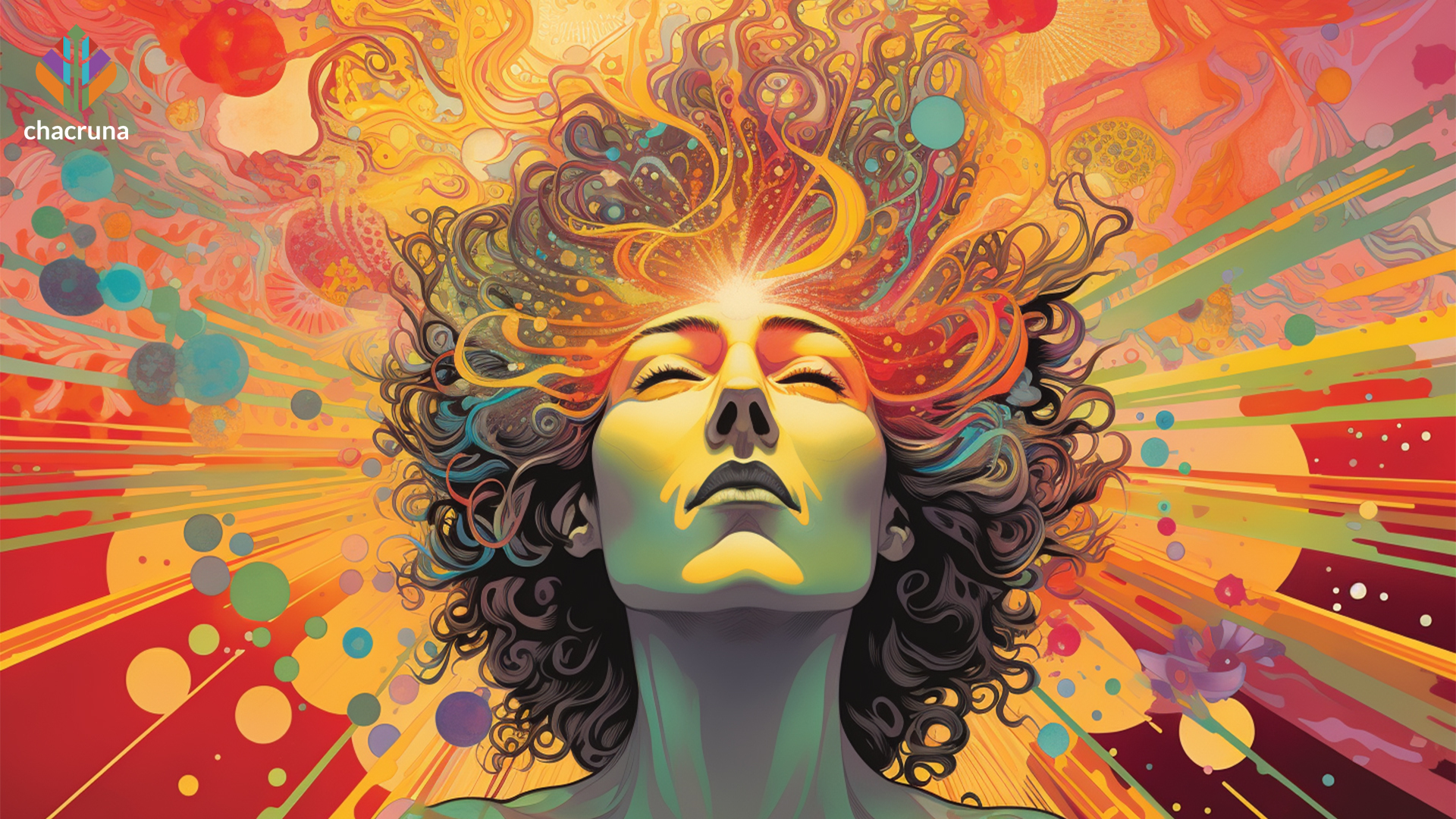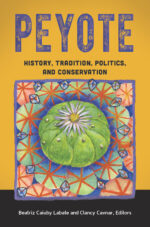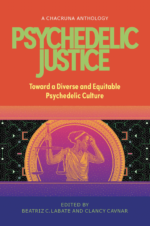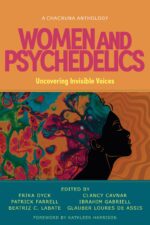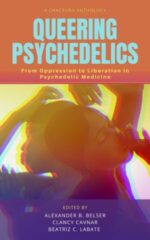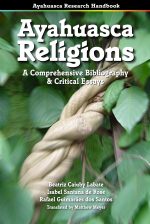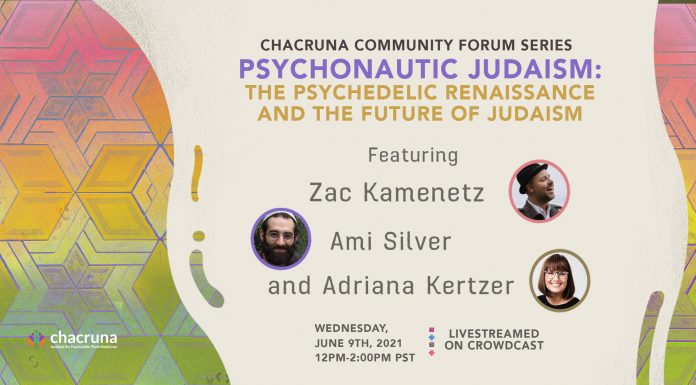- After 2024, the Scenario for Psychedelic Therapies Can Only Improve - January 16, 2025
- Symposium in Brazil Debates Psychedelics at a Political Crossroads - December 13, 2024
- Conference in Rio Defends Psychedelics in Public Health - December 11, 2024
Psychedelic Science 2023 brought together 12,000 registrants in Denver, Colorado, four times as many people as the previous conference in 2017, crowning the movement to rehabilitate psychedelics for therapeutic use against depression and other disorders. Science unveils unsuspected mechanisms of brain reconfiguration and ends decades of research bans imposed by the war on drugs, but serious obstacles remain to be overcome.
The 12-meter blue bear created by artist Lawrence Argent peeks through the glass facade of the convention center in Denver, Colorado, home to the Psychedelic Science (PS2023) Conference, which brought together 12,000 people at the end of June.
A good allegory for the interest that psychedelics arouse, now that consciousness-altering substances make a triumphant re-entry into culture and medicine—not without some risks.
The previous event, organized by the Multidisciplinary Association for Psychedelic Studies (MAPS), took place in 2017 in Oakland, California. Six years have been enough to quadruple the number of registrants, indicating that this sector of research is leaving behind the stigma created by five decades of interdiction. Its therapeutic promise has proved more powerful than the conservative prejudice.
“From a scientific point of view, the field has reached its maturity … The conference is no longer the main stage for major discoveries, which have migrated to scientific journals. It is a multifaceted social movement.”
Luís Fernando Tófoli
“From a scientific point of view, the field has reached its maturity,” says Luís Fernando Tófoli, a psychiatrist at University of Campinas (Unicamp) and one of the Brazilian researchers in the field who presented their work at PS2023. “The conference is no longer the main stage for major discoveries, which have migrated to scientific journals. It is a multifaceted social movement.”
Here and there, social change moves faster than evidence-based medicine. Colorado voted in 2022 to legalize psilocybin services circumventing the US Food and Drug Administration (FDA), following Oregon’s lead in 2020. Several US states, counties and cities follow in their wake.
Last Wednesday, the University of California, Berkeley published a poll in which 61% of American voters said they supported regulating access to psychedelic therapies. In Australia, one week after PS2023, authorization for psychiatrists to prescribe MDMA and psilocybin came into force.
The accelerated transformation was reflected in the PS2023 exhibition area. In 2017, shabby stalls dominated with colorful paraphernalia, from pipes to tie-dye T-shirts to esoteric imagery. In Denver, streets and streets were lined with professional booths. “A wave of new companies and products, [are] blurring the boundaries between research and commerce,” said Bia Labate, a Brazilian anthropologist, executive director of the NGO Chacruna Institute, which has organized several events in Denver.
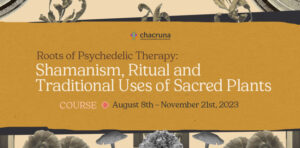
Join us for our Roots of Psychedelic Therapy: Shamanism, Ritual and Traditional Used of Sacred Plants course.
August 8th – November 21st, 2023. Scholarships Available!
“There is now a legal market for ketamine and cannabis, previously absent, and a blossoming mushroom market. Support for the war veterans’ community has become profound [because of interest in MDMA treatment], and with it the arrival of allies in the conservative sector. There is also vibrant growth of psychedelic societies around the world.”
After the official opening by a charismatic Rick Doblin dressed all in white, at ease in the role of corporate psychedelic guru, none other than Rick Perry introduced himself. Former Republican governor of Texas and energy minister in the Donald Trump administration, the politician made it clear that there is no longer as much contradiction between militarism and psychedelia as there was in the 1960-70s counterculture mobilized against the Vietnam War.
Such a turnaround was driven by the avalanche of studies over the past two decades showing therapeutic potential for a myriad of disorders, from depression and anxiety to migraine, anorexia, and OCD. Investors soon swarmed, eyeing patent opportunities and profits from therapies for conditions now underserved by psychiatric pharmacology.
This “medicalization” via the FDA ruffled the feathers of Indigenous peoples’ advocates at PS2023. The discomfort was evident in the intellectual sphere of the few panels dedicated to humanities and traditional knowledge and in the dignified reprimand of the Yawanawá leader Biraci Brasil to science for the appropriation of “forest medicines.” Finally, it exploded in the noisy interruption of the closing session by militants of Mexican or South American “ancestry” living in the US.
“Psychedelic science has gone mainstream, the renaissance has reached its plateau, it has won hearts and minds.”
Stevens Rehen
The protest drew attention, but not to the point of shifting the center of gravity of PS2023—the research. “Psychedelic science has gone mainstream, the renaissance has reached its plateau, it has won hearts and minds,” summarized Stevens Rehen, a neuroscientist at Federal University of Rio de Janeiro (UFRJ) and the Usona Institute in Wisconsin. “The future is psychedelic, and Brazil has the scientists and history to be a protagonist.”

Discover the Indigenous Reciprocity Initiative of the Americas
With Rehen agrees Sidarta Ribeiro, his collaborator in studies with ayahuasca and other compounds. “Brazilian psychedelic science managed to survive the scientific holocaust of the previous government [Jair Bolsonaro’s], making its presence felt at the meeting with several relevant and original presentations.” Ribeiro himself presented results from his study with Annie and Bryan da Costa Souza at Federal University of Rio Grande do Norte (UFRN), in which they showed some paradoxical aspects of the psychedelic effect with rats.
Rehen gave a lecture on the use of brain organoids (“mini-brains”) in the investigation of changes caused in neural tissues by compounds such as ayahuasca and 5-MeO-DMT. Luís Fernando Tófoli and Isabel Wiessner presented data on cognitive impacts of LSD in an experiment at the Unicamp. Dráulio de Araújo spoke of the comprehensive study with DMT that he leads at UFRN.
Araújo and Ribeiro participated in a pioneering study with images of the brain under the effect of ayahuasca, published in 2012 under the title “Seeing with the Eyes Shut.” They showed the activation of visual areas of the cortex that accompany the characteristic “mirações” of followers of religions such as Santo Daime, Barquinha and União do Vegetal (UDV).
Araújo felt reinforced in his notion that psychedelics allow the psychonaut to see his own thoughts more clearly. Thoughts that, in the case of depression and other mood disorders, happen to be negative and repetitive, becoming entrenched over the years.
Since vision is the sense par excellence for the notion of reality, as is said in the expression “seeing is believing,” the interpretation of the images that emerged in psychedelic trips would allow us to glimpse new perspectives, to see possibilities previously discarded as inaccessible.
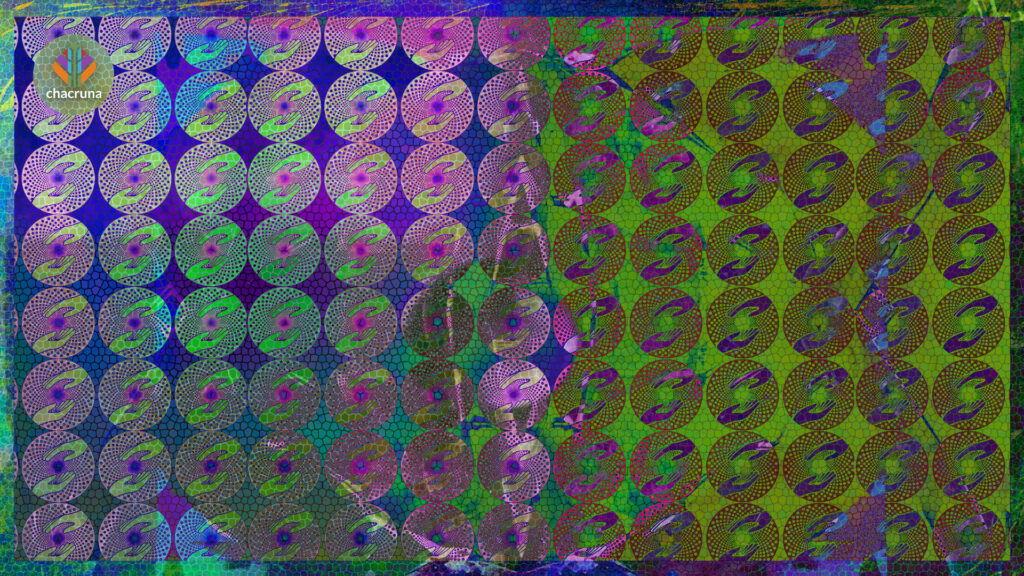
Since the 1950s, LSD, mescaline, and psilocybin had been used and investigated in the so-called psycholytic therapy, that is, the talking cure based on access and elaboration of traumas and contents obscured by psychic repression, the subject of Tófoli’s presentation at PS2023.
This line of study and clinical practice almost disappeared with the prohibitionist wave from 1966 onwards, but it has reappeared in new guises.
Today, this ability of psychedelics to visualize alternatives and uproot fixed ideas, the so-called rumination, is credited to the formation of connections in the brain. The rigidity in the flow of signals between areas of the brain is relaxed, it seems, with an increase in entropy to the extent that entrenched beliefs are reviewed from other angles and reworked.
“The increase in neural plasticity induced by psychedelics was just an intuition of some of us six years ago, today it is a well-established scientific fact, to which Brazil has contributed substantially,” says Ribeiro, alluding to studies at UFRN with ayahuasca and DMT.
“A few weeks ago, the first evidence was published that psychedelics can reopen the critical period of social learning.” Ribeiro refers here to one of the papers that caused the most sensation at PS2023, the research by Gül Dölen, from the Center for Psychedelic and Consciousness Research at Johns Hopkins University.
“A few weeks ago, the first evidence was published that psychedelics can reopen the critical period of social learning.”
Sidarta Ribeiro
Her presentation was based on the scientific article published five days earlier in the journal Nature, one of the most influential in the world, alongside Science. Critical period is the phase of brain development in which the nervous system shows increased sensitivity to social behavior stimuli accompanied by malleability of synapses and circuits, as in childhood.
It is common for reports of psychedelic experiences to compare them to seeing the world as if created anew (Albert Hofmann, 1906-2008, creator and first psychonaut of LSD) or the wonder of seeing it again as it was seen as a child (Alexander Shulgin, 1925-2014, chemist who rediscovered MDMA). Dölen showed in her elegant experiment with mice that this is more than mere figures of speech.
She used a standardized test to measure the rodents’ preference for isolation or social environments, known as sCPP. She applied it to animals injected with innocuous substances (placebo) and with five psychedelics: ketamine, psilocybin, MDMA, LSD, and ibogaine.
The study concluded that only in the case of psychonaut mice did curiosity for interaction with peers return to levels characteristic of juvenile animals. This means that psychedelics reopened a window of opportunity for learning.
“Critical period reopening may be the neural substrate underlying the ability of psychedelics to induce psychological flexibility and cognitive reappraisal, properties that have been linked to their therapeutic efficacy in the treatment of addiction, anxiety and depression” proposes the article in Nature.
Classic psychedelics such as mescaline, LSD, and psilocybin act on the brain via the same receptors on neurons, such as 5HT2a, activated by serotonin, a neurotransmitter important for feelings of well-being. Ketamine, ibogaine, and MDMA have less or zero affinity for 5HT2a, however.
Dölen showed that these molecules also open the window for learning (or redemption, in the case of human disorders). In other words, there would be another mechanism common to all of them at work to increase brain plasticity, that bypasses the serotonergic pathway.
The Johns Hopkins team eventually identified that this mechanism would be related to the regulation of the extracellular matrix, a kind of containment network that keeps cells in specific niches in tissues. In the brain, it limits, for example, the field for synapse multiplication.
Once its rigidity is reduced, neurons gain more freedom to establish new connections. It is not, therefore, neuronalplasticity in the strict sense, i.e. the formation of new synapses by individual neurons. More than that, what gets expanded are the conditions for several of them to do so, in what has been referred to as metaplasticity.
“It is tempting to speculate that the altered state of consciousness shared by all psychedelics reflects the subjective experience of reopening critical periods,” Dölen and co-authors wrote.
“It is tempting to speculate that the altered state of consciousness shared by all psychedelics reflects the subjective experience of reopening critical periods.”
Romain Nardou, et.al., “Psychedelics reopen the social reward learning critical period,” Nature 618 (June 2023).
The group also found in the mouse trial that the duration of the psychedelic effect correlates closely with the duration of critical period reopening. That is, with the time that the rejuvenating windows remain wide open.
“These results suggest that psychedelics could serve as a ‘master key’ for unlocking a broad range of critical periods,” the team states. “This framework expands the scope of disorders (including autism, stroke, deafness and blindness) that might benefit from treatment with psychedelics; examining this possibility is an obvious priority for future studies.”
A bold claim, but one made plausible by this remarkable experimental piece of investigation. Hitherto, the proliferation of suggested therapeutic targets for psychedelic drugs was seen as an Achilles heel, as the aura of panacea for all mankind’s psychic ills could arouse both unwarranted enthusiasm and discredit from the public and regulatory authorities.
The idea that psychedelics would save the world had already blossomed with the hippie movement, and everybody knows what happened: conservative backlash, war on drugs, collapse of research. Everyone now wants to avoid further mishaps dictated by hype.
Throughout PS2023, however, the expression “transdiagnostic” was constantly heard. In other words, the ability of psychedelics to remedy so many different disorders is already established as an indisputable fact.
Studies such as Dölen’s are sufficient to indicate that this may be the strength, and not the weakness, of psychedelics. If they seem to work for various disorders, as pre-clinical and clinical studies suggest, it would be because they facilitate the opening of channels in the rugged topography that disorders share, brain networks that have been isolated or blocked by psychological and physical trauma.
No one loses anything by holding back enthusiasm, however. Just days before the Denver conference, the FDA released for public consultation draft guidelines for the approval of breakthrough psychedelic drugs, signaling points where stumbling blocks may occur.
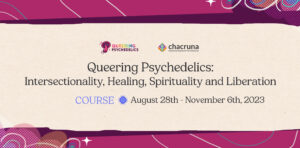
Join us for our Queering Psychedelics: Intersectionality, Healing, Spirituality and Liberation course.
August 28th – November 6th, 2023. Scholarships available!
One is the double-blind placebo control of clinical trials, a crucial gold standard for drug approval but difficult to achieve with substances that have a subjective effect that becomes obvious for both volunteers and experimenters. Another is the action of psychedelics on the 5HT2b receptor, a cousin of 5HT2a, but related to heart valve malfunction.
There are, on the other hand, more pressing obstacles in the pipeline opened by MAPS for approval of MDMA in the treatment of post-traumatic stress disorder, clearing the path for psilocybin and other psychedelics.
Reporting by Matt Wirz in the Wall Street Journal five days after PS2023 revealed that the association only has cash at hand for two more months of activity. But completing the FDA process is expected to take another year and consume hundreds of millions of dollars to get the actual commercialization of the treatment off the ground.
MAPS PBC, the NGO’s commercial arm is valued at $200 million, slightly less than Christian Angermayer’s Atai Life Sciences, which was worth $3 billion on the market two years ago and has shrunk to $240 million in the investor downturn since. MAPS PBC is trying to raise $85 million, Wirz said, to avoid falling at the last hurdle.
The only visible sign of this hurdle at PS2023, in contradiction to the gigantic nature of the conference, were posters and slides with a QR code to donate to MAPS. In 37 years of existence, the NGO has collected $130 million on a philanthropic basis, as there was no research funding available for proscribed substances.
The feat fell to Doblin, which is why he was so celebrated in Denver, verging on a cult of personality. The protagonist of the psychedelic renaissance got carried away and quoted Hermann Hesse in his “Journey to the East:” “It was my destiny to engage in a grand experiment.”
With a little more prudence, he could have continued with Hesse’s quote and added: “Having the good fortune to belong to the league, I was allowed to be a participant in a unique journey. How wonderful it was at that moment! How radiant and comet-like she seemed, and how quickly she was forgotten and allowed to fall into disrepute.”
This article was previously published in Portuguese by Folha de São Paulo here. The views expressed here are by Leite, and not Chacruna. Disclaimer: Leite sits on the advisory board of Chacruna.
Art by Trey Brasher.
Take a minute to browse our stock:
Did you enjoy reading this article?
Please support Chacruna's work by donating to us. We are an independent organization and we offer free education and advocacy for psychedelic plant medicines. We are a team of dedicated volunteers!
Can you help Chacruna advance cultural understanding around these substances?


